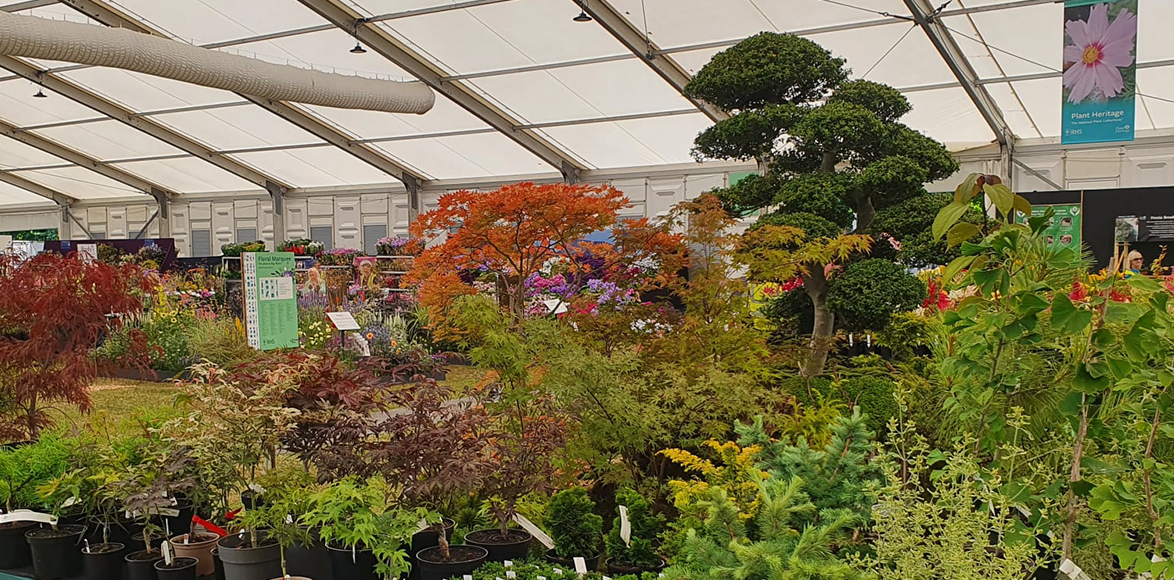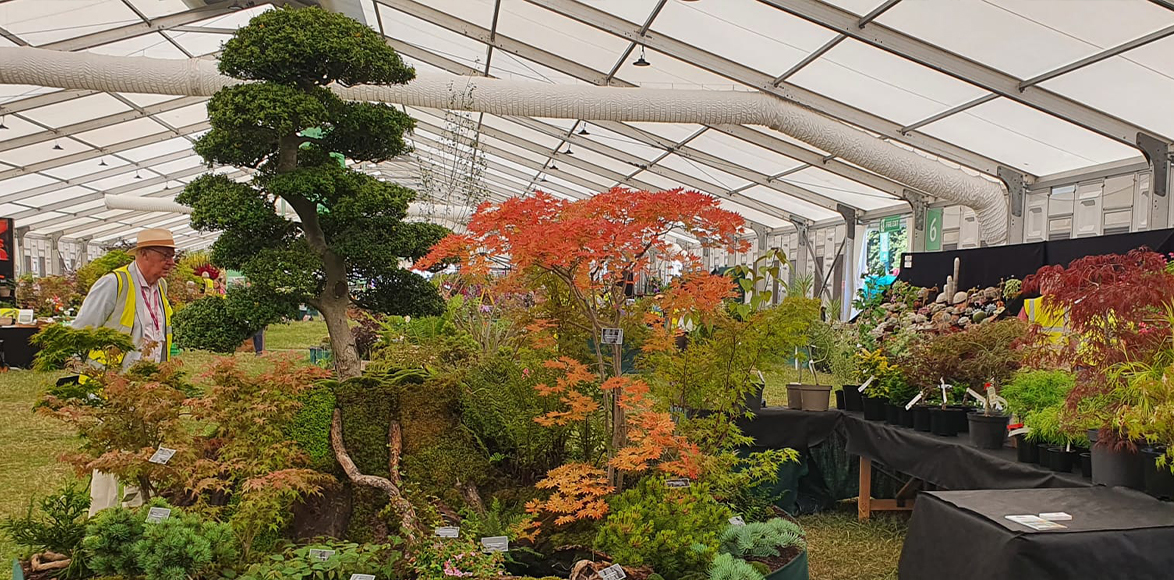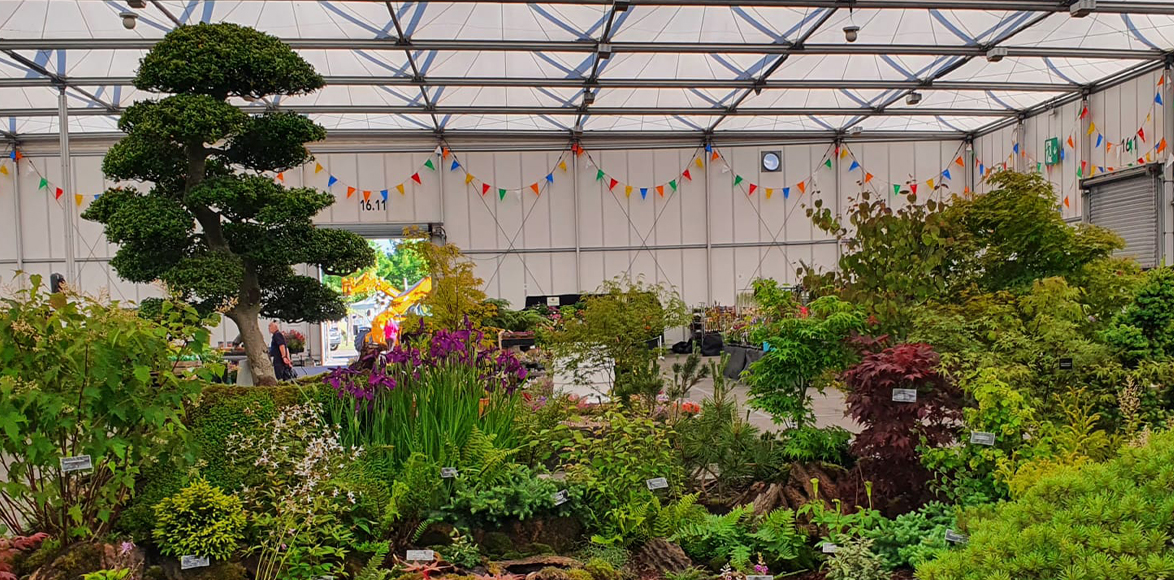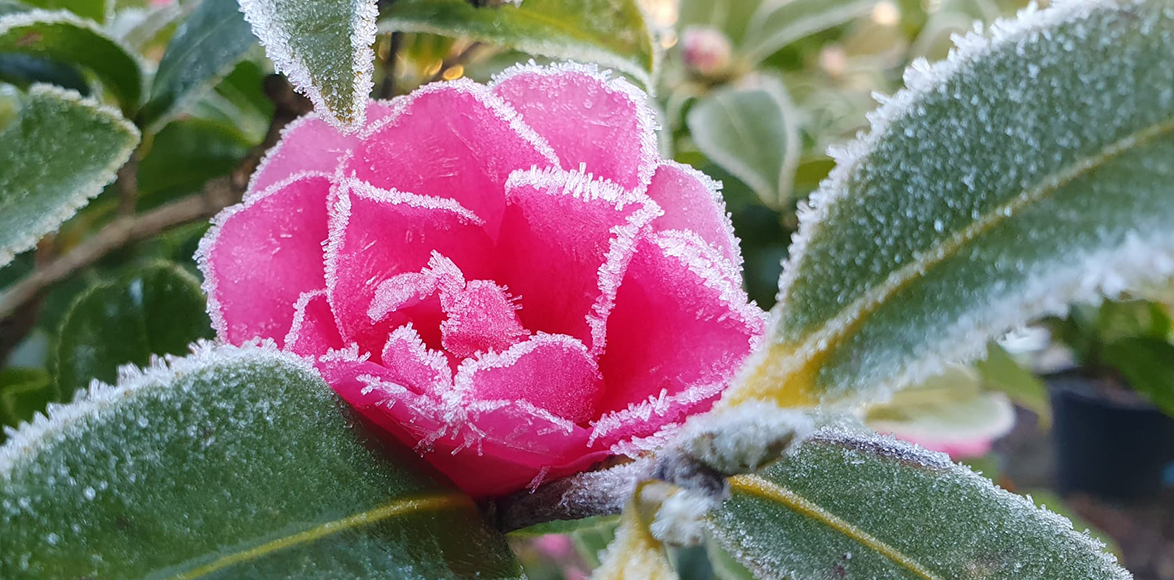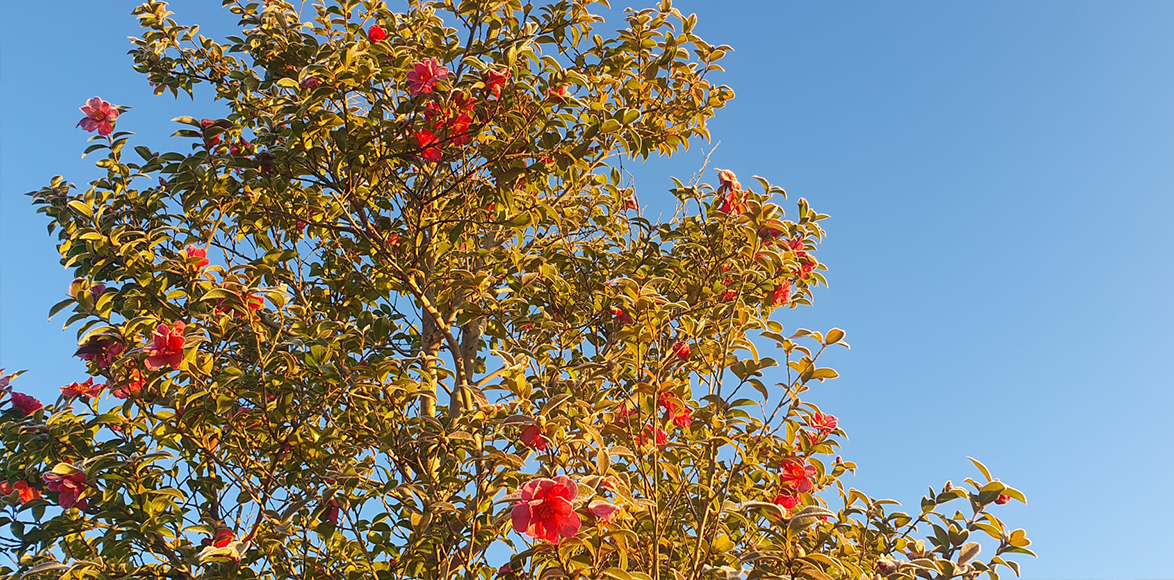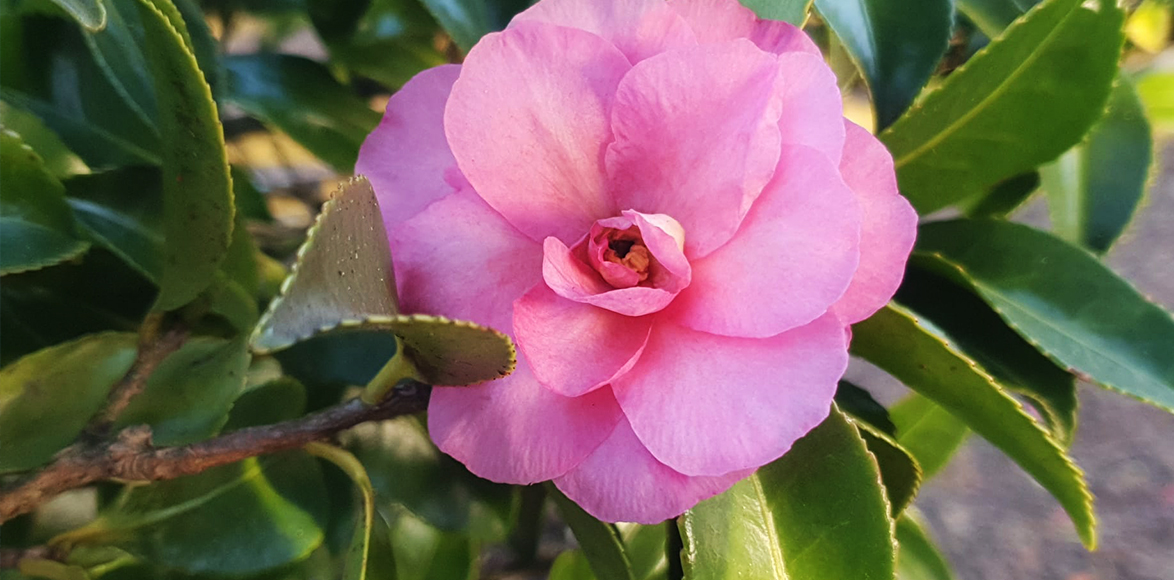Niwaki 庭木 - Japanese Garden Trees
'Niwaki' is the Japanese term for what we would call a 'garden tree' that is 'cloud pruned' forming a distinctive appearance.
Niwaki are distinct from Bonsai by being on a larger scale, grown for planting directly in the ground, but still retaining the styling and artistic characteristics associated with Bonsai.
Our Niwaki trees have been carefully grown and tended in Japan before being placed on sale here in the UK by David Cheshire Nurseries Ltd.
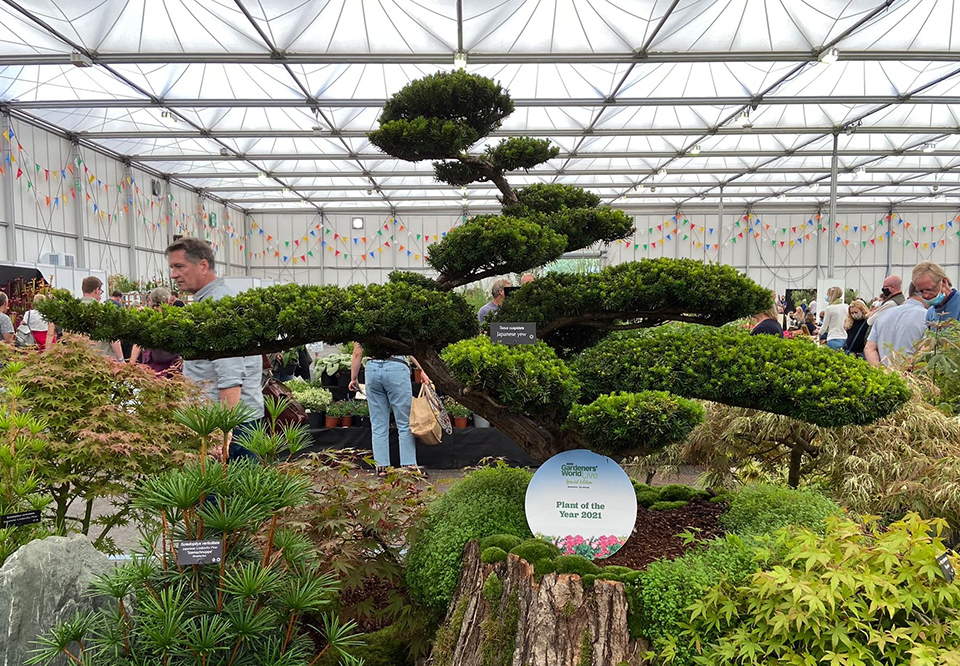
Niwaki wins Plant of the Year 2021!
In August 2021, David Cheshire Nurseries' Japanese Yew (Taxus cuspidata) Niwaki won the prestigeous Plant of the Year Award at BBC Gardeners' World Live as part of the Best Exhibit (Geoff Hamilton Award) in the Floral Marquee with Larchfield Trees.
Popular species used for Niwaki
- Japanese maple (Acer palmatum)
- Japanese aucuba (Aucuba japonica)
- Camellia (Camellia hiemalis, Camellia japonica, Camellia sasanqua)
- Japanese cedar (Cryptomeria japonica)
- Winter daphne (Daphne odora)
- Japanese enkianthus (Enkianthus perulatus)
- Gardenia (Gardenia jasminoides)
- Japanese holly (Ilex crenata)
- Sweet osmanthus (Osmanthus fragrans)
- Japanese andromeda (Pieris japonica)
- Japanese apricot (Prunus mume)
- Yoshino cherry (Prunus × yedoensis 'Yoshino')
- Japanese white pine (Pinus parviflora)
- Japanese black pine (Pinus thunbergii)
- Japanese evergreen oak (Quercus glauca, Quercus myrsinifolia)
- Satsuki azalea (Rhododendron indicum)
- Japanese yew (Taxus cuspidata)
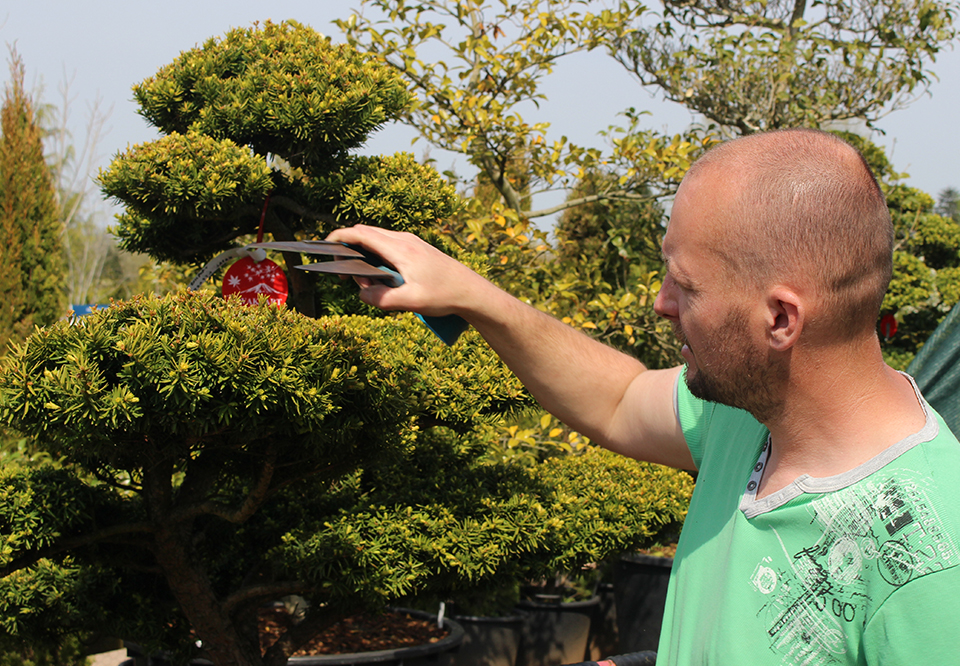
David tending to a Japanese Yew (Taxus cuspidata) at our Nursery.
Niwaki (庭木) Garden Tree availability

Japanese Maple
Acer palmatum
Acer palmatum is a species of woody plant native to Korea, Japan, China, eastern Mongolia, and southeast Russia. There are many different cultivars that are grown worldwide for their variety of attractive forms, leaf shapes, and spectacular spring and autumn colour.
Acer palmatum has been cultivated in Japan for centuries, with the first specimen reaching Britain in 1821.
- Fully hardy in the UK
- Swedish botanist Carl Peter Thunberg visited Japan late in the eighteenth century and he gave it the name 'palmatum' after the hand-like shape of its leaves.
- In Korea they are known as 'danpungnamu', in Japan as 'irohamomiji' or 'momiji'.

Camellia
Camellia hiemalis, Camellia japonica, Camellia sasanqua
Camellia hiemalis is a slow-growing evergreen shrub which is particularly attractive in winter when its beautiful flowers bloom. Bright rose-red / cerise flowers are produced from mid autumn to late winter.
- Fully hardy in the UK
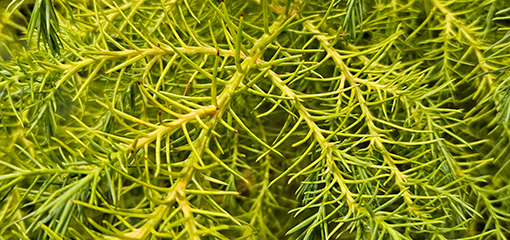
Japanese cedar
Cryptomeria japonica
Cryptomeria japonica is a conifer in the cypress family Cupressaceae, it was considered to be endemic to Japan, where it is known as 'Sugi'.
- Fully hardy in the UK

Japanese Holly
Ilex crenata
Ilex crenata is a slow-growing, evergreen shrub or small tree growing to 5m tall. It's tiny, glossy dark green leaves make it an ideal Niwaki. Small white, scented flowers in summer are followed by attractive black fruits.
Ilex crenata Japanese Holly is also known as Box-leaved Holly.
- Fully hardy in the UK

Sweet Osmanthus
Osmanthus fragrans
Also known as Sweet Olive, Tea Olive or Fragrant Olive, Sweet Osmanthus is grown for it's wonderful clusters of fragrant peach-coloured flowers which fill the air with the the scent of ripe apricots in late summer and autumn.
Osmanthus fragrans is a semi-evergreen shrub or small tree grows up to 12m (40ft) tall. The leaves are 7–15cm long. The flowers are white, pale yellow, yellow, or orange-yellow, small, about 1cm long, with a four-lobed corolla 5mm diameter. The flowers are produced in small clusters in the late summer and autumn and have a strong, sweet fragrance of ripe apricots. The fruit is a purple-black drupe 10-15mm long containing a single hard-shelled seed.
Sweet Osmanthus is native to Asia ranging from the Himalayas through South China (Guizhou, Sichuan and Yunnan) to Taiwan, southern Japan and Southeast Asia as far south as Cambodia and Thailand.
In China, its flowers are infused with green or black tea leaves to create osmanthus tea. The flowers are also used to produce osmanthus-scented jam, osmanthus cakes, dumplings, soups, and osmanthus liquor. It has been adopted as the "city flower" of the cities of Hangzhou, Zhejiang; Suzhou, Jiangsu; and Guilin, Guangxi.
In Japan, it is the "city tree" of Kitanagoya, Aichi Prefecture and Beppu, Ōita Prefecture, and the "town tree" of Yoshitomi, Fukuoka, Fukuoka Prefecture.
- Fully hardy in the UK
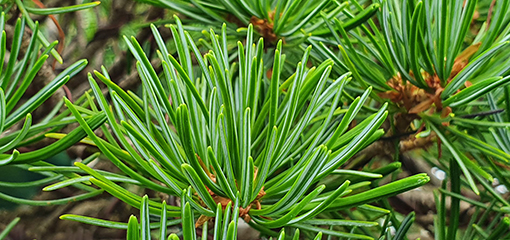
Japanese White Pine
Pinus parviflora
Pinus parviflora is a broad, conical evergreen tree, which develops a more spreading habit when old. Attractive fine blue-green needles and extream hardiness results in a long-lived tree ideal as a cloud-pruned Niwaki.
- Fully hardy in the UK
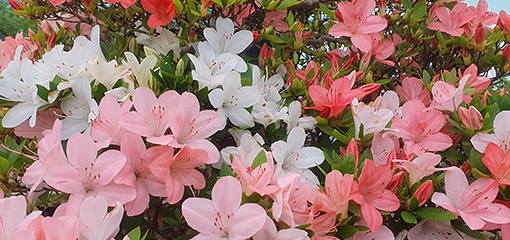
Satsuki azalea
Rhododendron indicum
Rhododendron indicum is an azalea Rhododendron native to Japan. It was first described by Engelbert Kaempfer in Japan in 1712. There are many cultivars including the Satsuki azaleas.
- Fully hardy in the UK
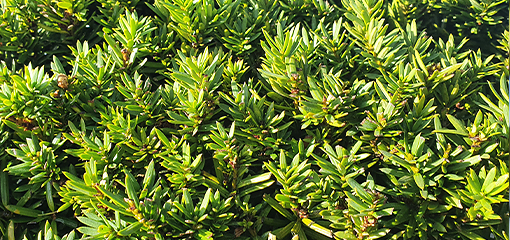
Japanese Yew
Taxus cuspidata
Taxus cuspidata when left to its own devices, forms a dense pyramid-shaped evergreen, that slowly becomes more rounded with age. Perfect for hedging or topiary, the Japanese Yew is a popular Niwaki tree.
Taxus cuspidata is very hardy and will thrive in full sun, partial shade or full shade making it a fantastic option for small, shaded gardens. Japanese Yew is very tolerant of pollution.
In August 2021, David Cheshire Nurseries' exhibited a Japanese Yew (Taxus cuspidata) Niwaki at BBC Gardeners' World Live. This specimen won the prestigeous Plant of the Year Award as part of the Best Exhibit (Geoff Hamilton Award) in the Floral Marquee with Larchfield Trees.
- Fully hardy in the UK
